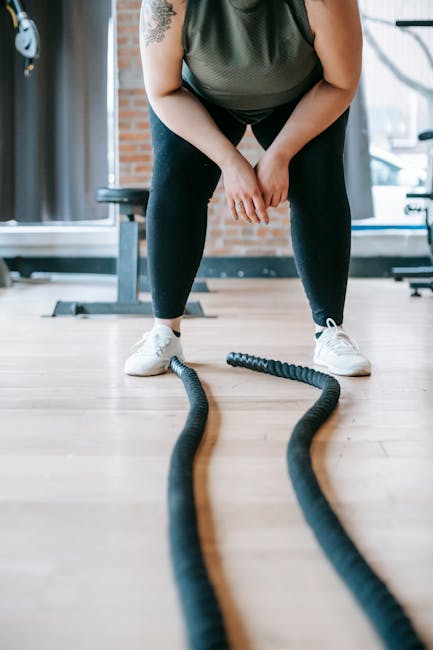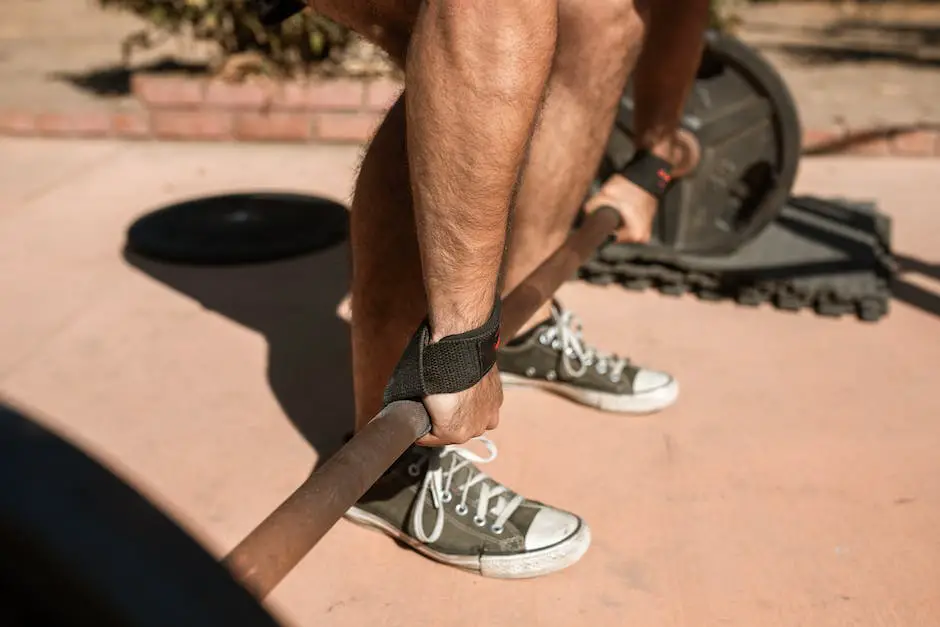Ladies and gentlemen, gather ’round! Do you find yourself dropping weights like it’s hot? Are your calluses rougher than a day-old loaf of bread? Fear not, for I have the solution to your lifting woes. Mastering the art of weight lifting straps is an essential skill for any seasoned gym-goer. Not only will you be able to lift heavier weights with ease, but you’ll also be the envied owner of some killer forearm tans. So sit back, relax, and strap in for a professional guide on how to become a weight lifting strap master.
Contents
- 1 1. Introduction: Understanding the Significance of Weight Lifting Straps
- 2 2. Choosing the Right Weight Lifting Straps for Optimal Performance
- 3 3. Proper Techniques for Using Weight Lifting Straps: A Step-by-Step Guide
- 4 4. Advanced Strap Techniques for Maximum Gains in Weight Lifting
- 5 5. Common Mistakes to Avoid When Using Weight Lifting Straps for Injury Prevention
1. Introduction: Understanding the Significance of Weight Lifting Straps
Are you tired of your grip faltering mid-set, causing you to drop the weight and embarrass yourself in front of your gym crush?
Well fear not, my friend! The solution to all your strength-related woes is none other than weight lifting straps.
But what are weight lifting straps, you ask? Simply put, they’re a game-changing accessory that allows you to hold on tight to heavy weights without having to rely solely on your own grip strength. With a strap securely wrapped around your wrist and the weight, you’ll be able to crush your lifting goals without worrying about your fingers slipping off and causing a scene.
- No more failed deadlifts!
- No more embarrassing barbell drops!
- No more excuses for skipping grip strength day!
In short, weight lifting straps are the secret weapon you never knew you needed. So buckle up (or should I say strap in?) and get ready to lift like a pro.

2. Choosing the Right Weight Lifting Straps for Optimal Performance
In the world of weightlifting, there’s nothing worse than losing your grip on the barbell, especially when you’re attempting to break your personal best. That’s where weight lifting straps come in, and let me tell you, they can be a real game-changer. But with so many options out there, how do you know which ones to choose? Here are a few things to keep in mind:
Material: Your straps should be made of high-quality, durable materials that won’t wear down or fray easily. Leather and nylon are popular choices, but there are also fancy-sounding options like “neoprene” and “Kevlar” that you can look into if you’re feeling fancy.
Length: Ideally, you want your straps to be long enough to wrap around the barbell multiple times, giving you a secure grip. But you also don’t want them to be so long that they start getting tangled up and interfering with your lift. Look for straps that are around 18-24 inches long.
Design: There are two main types of weight lifting straps: loop-style and figure-eight. Loop-style straps are easier to use and adjust, while figure-eight straps provide more support and can help distribute the weight more evenly. Ultimately, it comes down to personal preference and what feels most comfortable to you. Just remember, if you go with the figure-eight style, you’ll have to spend extra time perfecting your knot-tying skills.
3. Proper Techniques for Using Weight Lifting Straps: A Step-by-Step Guide
Are you tired of your grip giving out mid-rep during a heavy lifting session? Fear not, my fellow gym-goer, for weight lifting straps are here to save the day! But before you go wrapping your hands willy-nilly, let me walk you through the proper techniques of using these handy-dandy straps.
Step 1: Choose Your Straps Wisely
First and foremost, you’ll want to select the right type of straps for your needs. There are two main types of weight lifting straps: traditional cotton and more modern synthetic options. Cotton is soft and comfortable, but not as durable as synthetic options. On the other hand, synthetic straps are more durable but can be very stiff and uncomfortable early on.
Step 2: Proper Placement is Key
Once you’ve selected your straps of choice, it’s time to wrap them around your wrists. Begin by placing the loop of the strap around your wrist, ensuring that the tail-end is facing inward. The tail-end should be at least a foot long, and you’ll want to grip it firmly with your hand. Next, while holding the tail-end, wrap the strap around the barbell or dumbbell twice, pulling it tight as you go. When the strap is snug against the barbell/dumbbell, pull the tail-end firmly towards yourself so that your wrist is anchored in place.
Step 3: Time to Get Lifting
Now that your straps are securely in place, it’s time to get lifting! Take a deep breath, grip the barbell/dumbbell firmly, and then lift. As you lift, make sure to maintain control and keep your form in check. With weight lifting straps, you’ll find that you’re able to focus more on your form and achieve greater lifts without worrying about your grip strength.
Congratulations, you’re now a weight lifting strap pro! With these techniques in your back pocket, you can lift with confidence and in comfort. So go forth and make those gains!
4. Advanced Strap Techniques for Maximum Gains in Weight Lifting
So, you’ve been hitting the gym and putting in the work, but you’re still not seeing the gains you want? It’s time to take things up a notch with some advanced strap techniques. These babies will help you lift more weight and make those gains you’ve been dreaming of. Here are a few techniques to try:
- The Grip and Slip: This technique involves gripping the bar extra tight and then purposefully loosening your grip just enough to allow the straps to grab onto the bar. It takes some practice, but once you get the hang of it, you’ll be lifting more weight than ever before.
- The Twisted Sister: For this technique, you’ll need to twist the straps around the bar before grabbing onto them. This will help lock the straps in place, so you can focus on lifting without worrying about the bar slipping.
- The Double Trouble: Double up on those straps! By adding an extra strap to each hand, you’ll create a stronger grip that will allow you to lift more weight with ease. It may look a little silly, but who cares if you’re making those gains?
Remember, with great power comes great responsibility. Be sure to use these advanced strap techniques safely and within your limits. And, as always, keep pushing yourself to be better and stronger each day.
5. Common Mistakes to Avoid When Using Weight Lifting Straps for Injury Prevention
Here are some common mistakes that people make when using weight lifting straps. Be sure to avoid these mistakes so that you don’t get injured during your workout!
- Not adjusting the straps properly: If the straps are too loose or too tight, you risk injuring yourself. Make sure that the straps fit snugly around your wrists, but not so tight that they cut off circulation.
- Relying too heavily on the straps: Weight lifting straps are a great tool for helping you lift heavier weights, but you shouldn’t rely on them too heavily. If you’re using the straps for every single lift, you’re not giving your grip strength the chance to improve.
- Using straps with a weak grip: If you have a weak grip, using straps can be tempting. However, if you’re not able to hold onto the weight without the straps, you’re not ready to use them yet. Work on building up your grip strength before relying on straps.
By avoiding these common mistakes, you can use weight lifting straps safely and effectively. Happy lifting!
Don’t Be a Deadlift Dummy
Congratulations, you’ve made it through the beginner’s guide to weight lifting straps. Now you’re ready to take on the big boys and girls. Remember, weight lifting straps are an amazing tool to help you lift heavier and more efficiently. But don’t forget, they don’t make up for poor technique or lack of strength.
So go forth, deadlift with confidence, and don’t be a deadlift dummy. With these tips and tricks, you’ll be a master of the art of weight lifting straps in no time. And who knows, maybe you’ll even become the envy of the gym. Happy lifting!








Leave A Comment